How to do a Website Audit to Improve SEO & Conversions
-

Aaron Gray
- Blogs
-
 January 01 , 2022
January 01 , 2022 -
 16 min read
16 min read
Auditing is a big part of SEO that we don’t tend to talk about and it’s a necessary part of any good SEO strategy. In this post, we’ll discuss what a website audit is, why a website audit is important, what is typically explored in a web audit, and some tips for conducting your own audit.
Let’s get right into it!
What’s a Website Audit?
When you read the word ‘audit,’ what do you think of? A lengthy and laborious process that no one looks forward to? Well if that’s what you were thinking… you were right! But don’t let that stop you from reading on.

An audit is a detailed inspection of an organisation’s accounts and assets. A website audit is a detailed inspection of an organisation’s digital assets. This includes all pages within their network of websites, written content, links, blogs, articles and all other parts of the business’s digital presence that they want to optimise.
Yes, the process can be time-consuming and tedious, but if you want to improve your business in the digital space, a website audit is where you must start. Website audits are usually the first stage of a bigger SEO strategy that includes keyword research, audience research, creating a plan, and putting that plan to action. This is what our sample SEO Audit Summary looks like for customers who are considering one of our Wholesale SEO Packages.
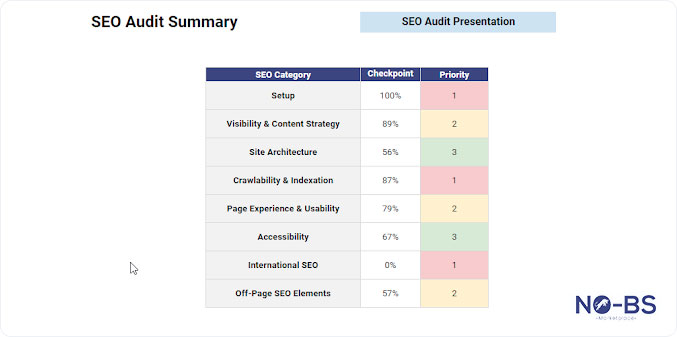
The ‘SEO Category’ section separates the auditing process into measurable sections. The ‘Checkpoint’ section shows current progress. And, the ‘Priority’ section lists the level of urgency for each item listed with 1, or red, being the most urgent and should be addressed first.
Here’s Why Website Audits are Important
A website audit is important because it lays the foundation for the rest of the SEO strategy. There are many different ways a website audit can help your website. Here are a few:
- You get a comprehensive list of all content that has already been created. You can use this list to decide what content stays, goes, gets refreshed, or repurposed.
- You get a full analysis of content performance – past and present. Identify strong and weak content. Create a plan for updating or archiving poorly performing content. Also, create a plan for amplifying or repurposing strong content.
- You also get a competitor analysis to find out what competitors are doing to attract their ideal clients.
- You get a birds-eye view of the creative flow like:
- Who is creating content?
- What kind of content is being created?
- How is it being distributed?
- Is the current content creation flow working?
- Use that information to find weak spots in the creative process and optimise accordingly.
You can use all of this to build a solid foundation for your future SEO strategy.
Can you see all the value an audit brings to the table?

Since audits are so valuable, why isn’t everyone auditing all the time? Audits can be time-consuming, so it’s only necessary to perform an audit if you have the resources available to support the process. And of course, don’t waste your time auditing if you don’t plan to use the information gathered through the audit to make strategic decisions.
It might be time to consider starting a website audit if…
- You want to increase the quality and quantity of your website traffic and your current strategy isn’t working.
- You have trouble creating new content that is engaging, fresh, and aligned with your brand.
- Your website has existed for a few years.
- You have content that is old and irrelevant on live pages.
- You don’t have a clear plan for on-page and off-page content creation.
These are all great reasons to get started with a website audit. How in-depth your web audit is will depend on your SEO goals. You can have many goals or just one, but there are 5 main categories these goals will most likely fall under which are Web Page Performance, Search Engine Optimisation, Increase Conversion Rate, Competition and Industry Analysis, and Flagging Potential Issues. Let’s expand on each of these 5 broad goals and how they fit into the content audit process.
Web Page Performance
1. Page Design
Code is the foundation of web page design and is an essential part of SEO. Web developers typically use HTML or CSS to build a website and our free HTML to Script Converter Tool as well as our free CSS Validator Tool can support you through the code optimisation process.
The code is also where you can control how search engine bots scan, index, and present information about your website on SERPs. A robots.txt file tells these bots what parts of a website should be scanned and presented on SERPs and which pages to ignore. Here’s an example of what our robots.txt file looks like. You can see that we are talking to all search engine bots because of the asterisk beside ‘User-Agent.’ You can also see what pages bots are allowed to crawl or disallowed and the site map.
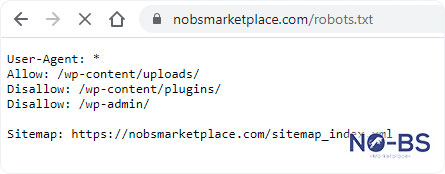
Mobile friendliness and readability are also important aspects of page design. A large percentage of search traffic comes from searchers who are on their phones. If your website is hard to read or isn’t mobile-friendly, this could cause page visitors to leave your page in search of a resource that’s easier to read.
During the auditing process code, mobile-friendliness, readability and other page design factors will be reviewed. Any issues or areas for improvement that are found will be flagged for review.
2. Page Load Speed
While it makes sense to fill your web page with eye-catching high-resolution images, they could slow down your website. Page load speed measures the amount of time it takes for a website to load. High-resolution images, PDFs, videos, and other types of content that could have a large file size have the potential to slow down your website.
If page load speed is an issue that gets flagged during a website audit, the next step is to identify the sizes of files on each webpage. Then optimise all file sizes accordingly to improve page load time. Page visitors don’t want to wait for your page to load and the clock is ticking.

Page load speed across the entire site will be reviewed during the auditing process and should be monitored as updates and changes to the page are made.
3. Content Organisation
Website navigation and URL structure are important aspects of web page performance. Having an organised menu structure allows the page visitors to easily navigate your site, even if they’ve never visited before. If the menu is not organised or does not highlight valuable pages, it’s not effectively guiding users through the website.
URL structure is also important for helping visitors know what page they’re heading to when they see your site on SERPs. If the searcher is looking for link-building services and a website URL looks like this: www.examplesite.com/link-building, then they will most likely trust the site and click on the link. URLs that have unfamiliar combinations of letters and numbers seem less trustworthy to searchers. When crafting a URL or optimising existing URL structures here are some tips for best practice:
- Keep the URL simple.
- Include 1-2 keywords at most.
- Use words that are in the title of a page or post.
In the two examples below you can see two different blogs about blogger outreach. They each have their own unique URL that highlights the target keyword phrase blogger outreach.
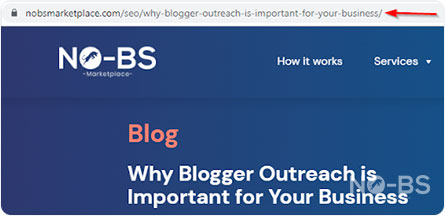
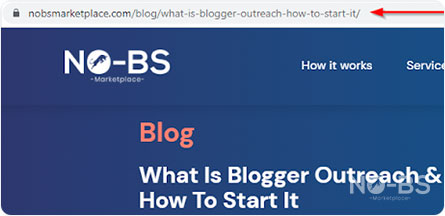
During the auditing process, all URLs will be collected and compiled into an organised document. During the review process, it’s best to flag all URLs that need to be updated, archived, and deleted.
The pillar and cluster model is a great way to organise your existing content and build plans for future content creation with internal linking. If you want to learn more check out our Simple Guide to Internal Linking for a deeper explanation of what the pillar and cluster model is and how to use this strategy to boost SEO.
Having an internal linking strategy is a great way to increase brand authority and it also boosts content performance by keeping users on your network of websites. If a new page visitor is reading Article 1 on your site and sees a link to Blog A that has more information on a related topic, the user will most likely click the link and also begin to see your site as an authoritative source within your niche.
Your internal linking strategy – or lack thereof – will be examined during the auditing process. If you have an internal linking strategy, how effective is it? If you don’t have an internal linking strategy, how best can existing content be linked to each other?

4. Content Performance
I mentioned that internal linking keeps page visitors on your website. Another valuable metric to consider is the bounce rate which measures the amount of time a visitor spends on a web page before leaving.
A high bounce rate means that visitors are leaving a page quickly. This could happen for any number of reasons, but some of the common causes of high bounce rate include:
- Slow page speed
- Short or unengaging content
- Poor site design
- Too many ads on the page
A low bounce rate is what you want. This means that the traffic that is coming to a web page stays on the page for a longer period of time. But before you can even measure how long visitors are staying, it’s important to track how much traffic is coming to a page.
Use our free website Traffic Checker during your auditing process to find out how much traffic your content is getting.
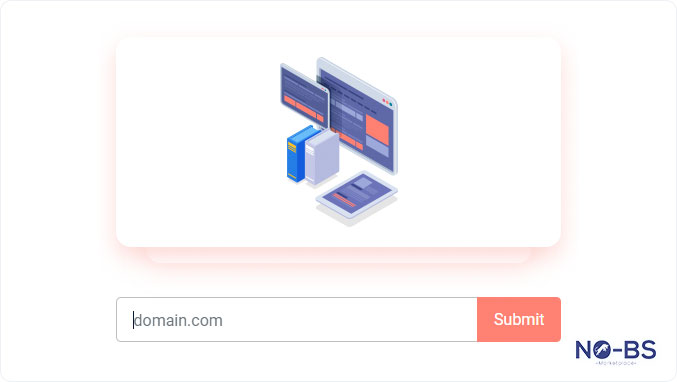
Web page performance is just one aspect of a website’s digital presence that is examined during an audit. Paying attention to page design, load speed, content organisation, and content performance will prove to be valuable down the line. Next up is search engine optimisation.
5. Search Engine Optimisation
There’s many components of SEO that need to be factored in when completing a website audit. These include:
- E.A.T Audit: Expertise, Authoritativeness, and Trustworthiness come together to make E.A.T which is a way to gauge how a website will rank on SERPs. When a site has a high E.A.T score, it will most likely rank high on SERPs. You can increase your website’s expertise, authority, and trustworthiness by targeting specific keywords and optimising content on-page and off-page. We’ll expand on all three of those topics below.
- Keyword Research: To figure out which keywords to target, you must do research to find out what your target audience wants. As you start to identify short keywords that are highly searched for in your niche, begin to develop long-tail keyword phrases. A short-tail keyword is usually 1 word that a lot of businesses are trying to rank high for on SERPs, so there’s a lot of competition.

A long-tail keyword phrase is usually multiple words, more specific, and has less competition when it comes to organic search and paid ads. Once identified, it’s important to use keywords wisely. Too many keywords, or ‘keyword stuffing,’ is a bad writing practice. To find out if there are too many keywords in your content, use our free Keyword Frequency Counter tool to enhance your content strategies.
- On-Page and Off-Page Content: The term ‘on-page’ refers to all content within a company’s website. During an audit, the use of keywords throughout all on-page content will be examined. Are there places on your website where language can be optimised to include more targeted keywords? The term ‘off-page’ refers to all content related to a company that exists outside of the company website. This is a wide range of content that includes how search results look on SERPs, backlinks created organically or through guest posts, or sponsored content. High-quality backlinks are extremely valuable for improving E.A.T. During the audit process all off-page content will be examined.
Web page performance and SEO information that’s gathered through an audit is meant to give a clear reading of how a website is performing within its niche. This information helps to craft strategies that increase the quality and quantity of traffic from SERPs to a website and increase the time visitors spend on a web page.
But there’s got to be a reason for increasing web traffic and keeping users engaged on your website. And that reason is money. How can you convert a user from page visitor to a paying customer? By increasing your conversion rate.
Increase Conversion Rate
Conversion rate measures the percentage of page visitors that land on a page and follow a call to action. The call to action could be related to filling out a contact form, subscribing to an email list, but in the case of sales, the call to action is purchasing.
The best way to increase conversion rate starts with audience research.
- Who is your target audience and how are your competitors already meeting their needs?
- What are some unique selling points for your offering and how can you reach your ideal client?
Once you’ve audited your audience it’s time to audit how you speak to your audience.
- Are you reaching them at all stages of the buyer’s journey?
By that I mean, are you creating content that appeals to these stages:
- Awareness stage (learning and gathering knowledge)
- Consideration stage (weighing options and comparing offerings)
- Decision stage (ready to purchase)
Performing an audit helps to increase the conversion rate because the audit sheds light on who your customers are, how you are currently serving them, and how you can improve. This information will influence the digital marketing strategies like blog posts, videos, influencer partnerships and more that bring in more traffic to your site. More traffic makes it easier to get customers which reduces customer acquisition costs.
Competition and Industry Analysis
It’s best practice to include competitor analysis and industry analysis in a website audit. Competitor analysis involves picking businesses that are in close competition with your brand. Here are some factors that can help you decide if a business within your niche is a direct competitor:
- Company size
- Industries they target
- Products, services, and other offerings
- Social media presence
- Content marketing strategies
An industry analysis goes over what others in your industry are doing. During the audit process, industry analysis gives an overview of the businesses in your niche, how they serve the customers in your niche, what segments may already be saturated.
Flag Potential Issues
Overall, the biggest benefit of performing an audit is finally shedding light on anything that could be negatively impacting your digital presence that has been overlooked or forgotten. There are many different issues that can be flagged in a website audit for SEO. Here are some common issues that are often flagged during a web audit.
- Broken Links – Broken or missing links can show up on your site at any time. These are links that show an error like 404 Page Not Found. Use a free Broken Link Checker to find out if your site has any broken links that could be damaging your SEO efforts.
- Old or Duplicate Content – Search engine bots spend a limited amount of time crawling and indexing each website, so you don’t want that time wasted crawling outdated or duplicate content. Once this content has been flagged, create a strategy to archive or delete content that is no longer relevant and update all content that just needs to be refreshed.
- Bad Page Titles – Titles are an important part of an on-page SEO strategy because they show page visitors and search engine bots what the page is about. Titles that are missing, not keyword optimised, incorrect, or misleading could have a negative impact on SEO.
- Meta Descriptions – The description that shows up on SERPs can be edited by including a meta description for your page. Pages that do not have a meta description, the description is too long, or it’s not keyword optimised will be flagged during an audit. Keeping meta descriptions updated and optimised is the best practice for ongoing SEO success.
- Missing Site Map – A site map gives search engine bots an overview of your website architecture. If your site’s robots.txt file doesn’t have the sitemap listed, then you’re missing out on an opportunity to boost your SEO. You can see our site map listed in the bottom line of our robots.txt file below. Check out our Beginner’s Guide to Robots.txt to learn more.

- Missing Redirects – When web pages are moved, updated, or deleted, the old URL might still have traffic from users who visited the page in the past. If you don’t have a redirect on the old URL to a new page, you are diminishing the value of the old link. Redirects help websites pass link value from an old link to a new link which builds the value of the new link. Link value measures the amount of quality traffic that is coming to that link regularly.
Tips for a Successful Content Audit
- Know Your Goals – Get clear on why you’re doing a website audit and what you want to get out of the audit. These goals will most likely align with your broader business goals.
- Gather and Organise Your Assets – Build a team or hire a team that is dedicated to collecting and organising all of your web pages, written content, video files, images, PDFs and any other content that has been reviewed. Note the content to be kept as is and flag any issues that need to be addressed.
- Prioritise List Flagged Issues – Rank the priority level of each issue – high, medium, or low priority is the common ranking system. High priority content needs to be addressed urgently and low priority can wait. It’s also important to note the expected time commitment or perceived difficulty level of each task, so you can plan accordingly.
- Create a Strategy – Use the information you uncover to make a plan for optimising your site over the course of a few months to a year. You may be able to update your site faster than this if you have the time and resources available.
So, to sum it all up, a website audit is where you should start if your business wants to increase the quality and quantity of traffic to your website and boost overall SEO. Without an audit, you won’t have a clear picture of what is working, what should be updated, and what should be removed altogether.
Instead of blindly creating content and making updates that are ineffective, use your time wisely to research, reflect, and make informed decisions about the future of your business’s digital presence by conducting a website audit.
Subscribe to Our Blog
Stay up to date with the latest marketing, sales, service tips and news.
Sign Up
"*" indicates required fields


